
Big Bluff Ranch
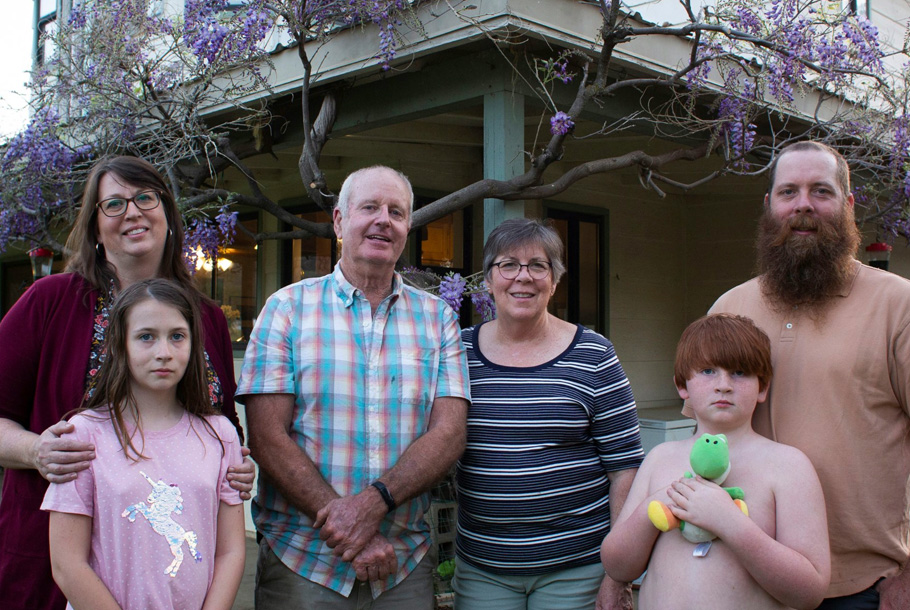
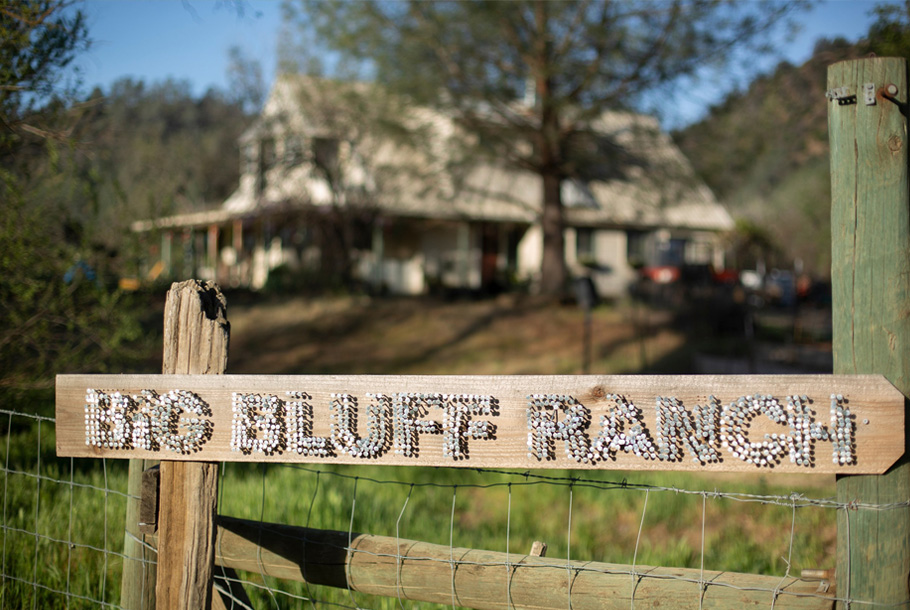
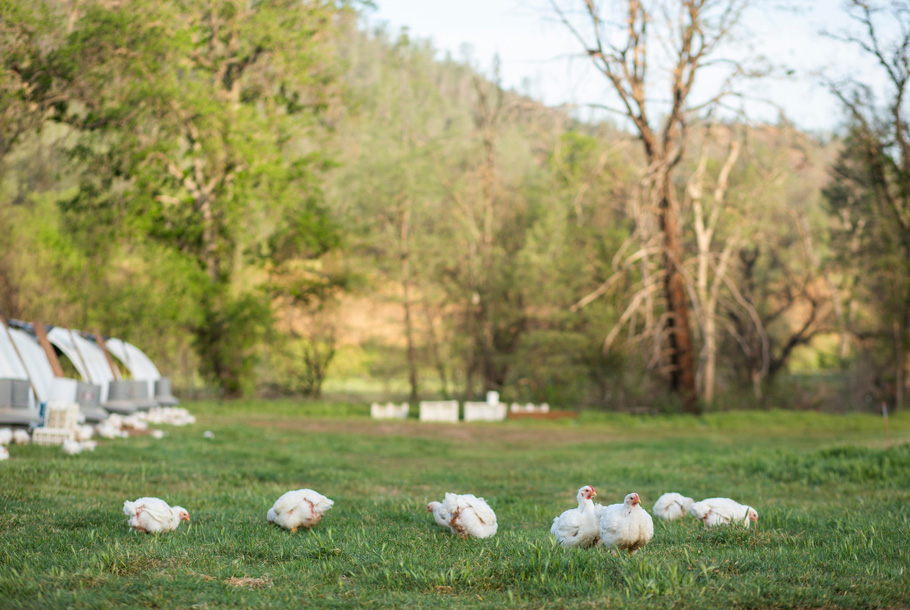
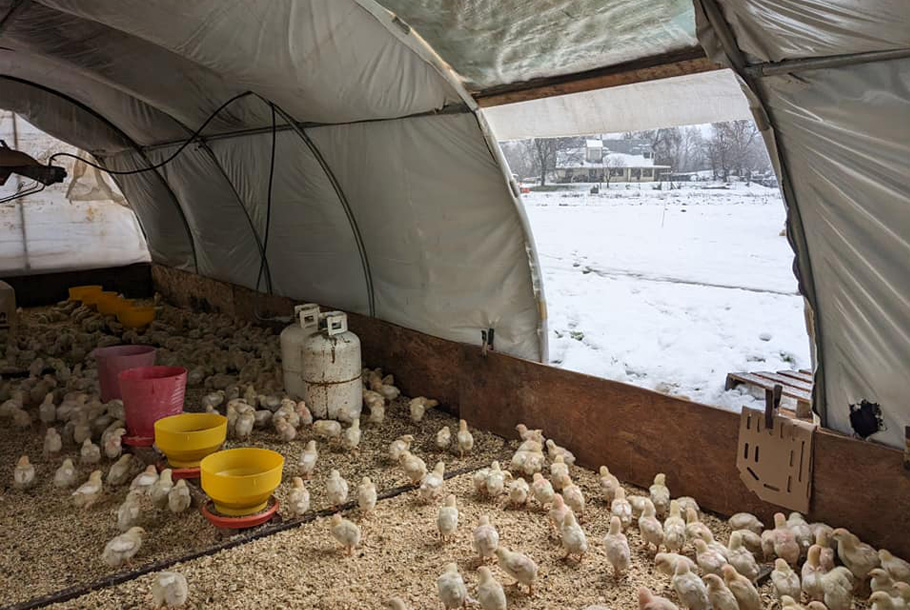

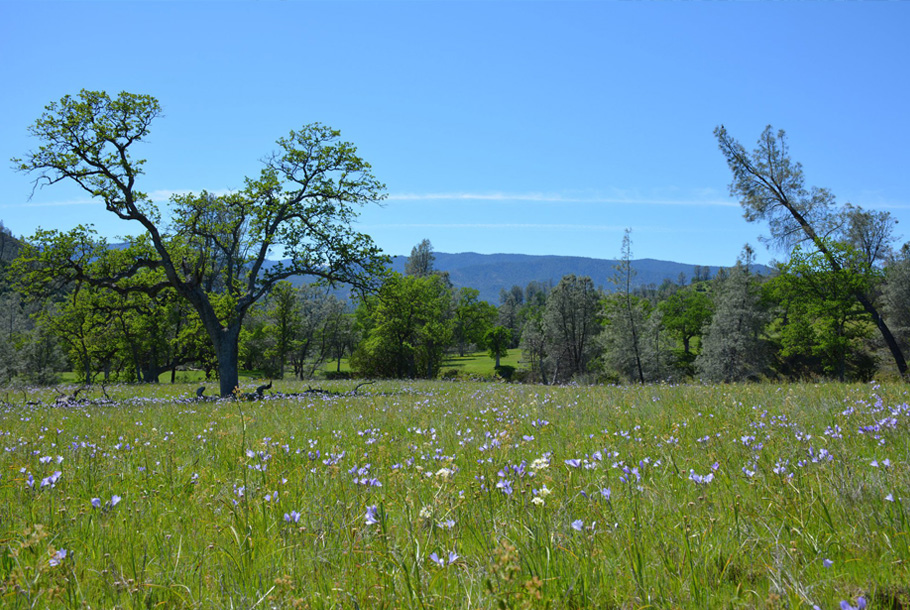
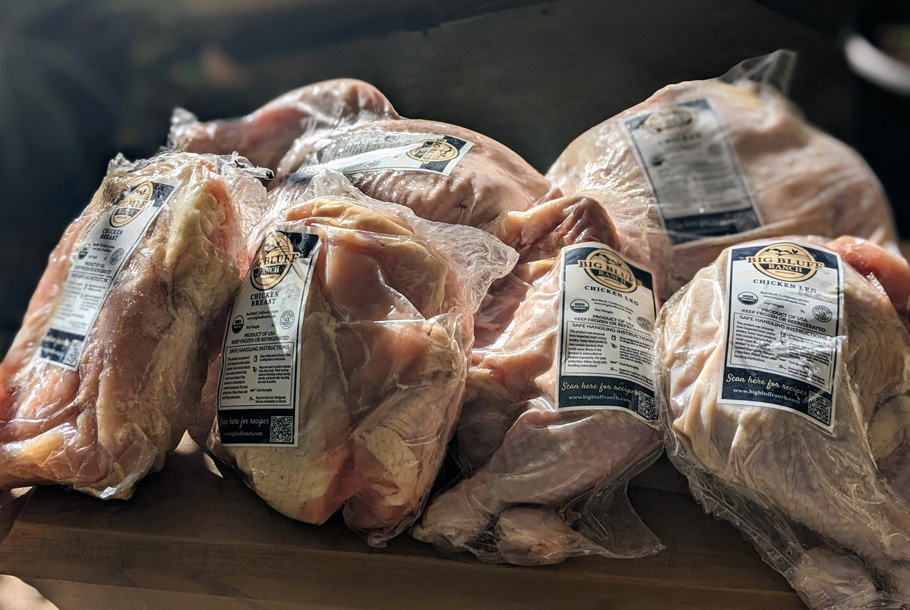
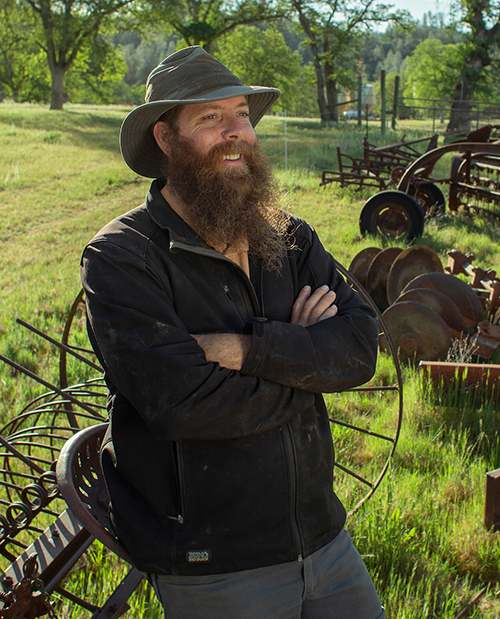 Tyler Dawley, 3rd generation farmer at Big Bluff Ranch(opens in new window), says he has been doing regenerative agriculture since “before it was cool, before people called it that.” His dad went to an Alan Savory workshop on Holistic Management in the early 80s and they’ve been using that approach ever since, pretty much all of Dawley’s life.
Tyler Dawley, 3rd generation farmer at Big Bluff Ranch(opens in new window), says he has been doing regenerative agriculture since “before it was cool, before people called it that.” His dad went to an Alan Savory workshop on Holistic Management in the early 80s and they’ve been using that approach ever since, pretty much all of Dawley’s life.
Big Bluff Ranch is on 4000 acres about 25 miles west of Red Bluff, CA. Dawley’s grandparents lived in Berkeley, but his grandfather always wanted to move to the country and try ranching. “He just wanted to be John Wayne, right?”, says Dawley. Everyone always thought he was bluffing, but in 1960 he bought the property and it got named “Big Bluff Ranch.” At first, it was a hobby ranch. They tried a lot of different things, but in the late 70s there was an economic downturn. Suddenly the ranch needed to make money and Dawley’s parents took over. Dawley says that the useable part of the ranch is about half the scale of what it would ordinarily need to be for a successful commercial operation. They also knew the soil had low fertility so they couldn’t just do things the conventional way—they wanted to both save the family farm and do so in a way that would be sound for the ecosystem.
The Road to Being “Chicken Ranchers”
“Wow, chickens. You don't want to be a chicken farmer. No one wants to grow up to be a chicken farmer!” Tyler Dawley is quite adamant about this, but raising chickens is where their biggest success came in.
How? Finding out about Alan Savory was a big step and one thing led to another from there. When they started making holistic management decisions on the ranch, they stopped doing the farming projects that weren’t paying off and focused more on the rangelands. Dawley says, “We spent more time building fences, moving cows. And we started seeing a lot of good results. Then in the 90s, the next evolution of taking care of the land with animals came in. We realized that the animals need to fit the land. So that's when my dad started buying different style bulls—shorter, wider bulls—because they do better on grass than those bred to do well in feedlots. And it just so happened that that type of cow was really good for grass-fed beef.”
The grass-fed beef industry started gaining traction in the late 90s and early 2000s. Dawley graduated college in 2000. “My joke, which is almost true,” says Dawley, “ is I graduated on a Friday and I was at a farmers market on a Sunday selling our grass-fed beef!” Through the 2000s, Big Bluff Ranch sold grass-fed beef and experimented with raising different species. “We tried goats, we tried sheep, and we would direct market all this to the farmers markets. We went back and forth. We were able to raise them relatively well, but we weren't able to sell them that at the time. Meat at farmers markets was not really common yet.” People would say, “I brought 20 bucks and I didn't bring a cooler bag.”
Dawley explains that the ranch is 45 minutes from Red Bluff, which is a small town. Red Bluff is 45 minutes from Redding or Chico, which are the closest cities with large farmers markets. But raising grass-fed beef is not inexpensive, and the people who attend these markets don’t tend to bring a lot of cash. The Dawleys tried driving to Sacramento, but that’s a long trip and the money made was not enough for it to be a sustainable choice.
So they kept experimenting. They tried doing a meat CSA [Community Supported Agriculture] with home delivery. They started shipping. And they always tried to avoid raising chickens. Dawley says they raised just a few in 2006 and didn’t like the experience. “We didn't like plucking them in the kitchen like grandma used to do, and it stunk!” But step by step, they realized that everyone eats chicken and there wasn’t much competition in that market so they opened up the door.
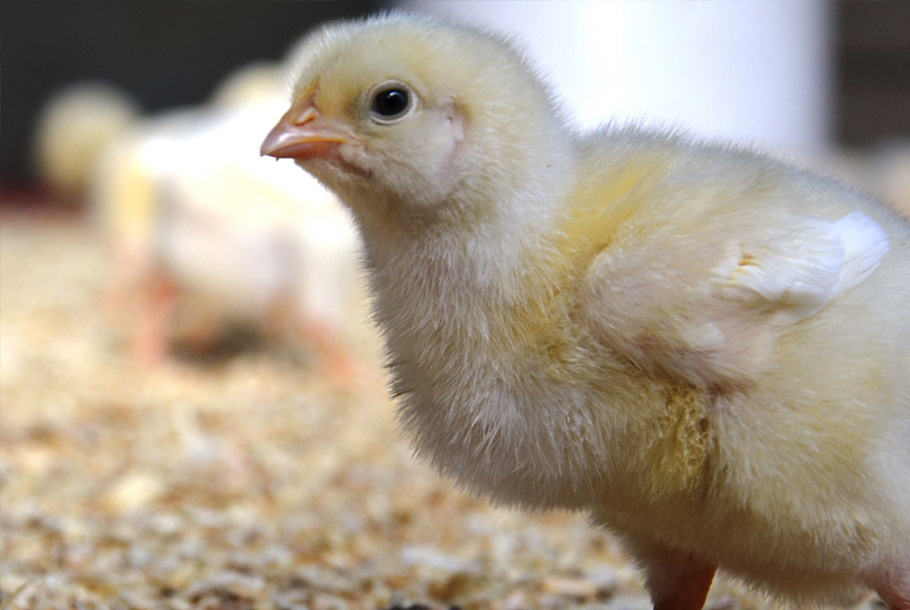 Dawley describes the transformation that took place: “We got up to about 1800 head a year direct marketing our chicken, killing and processing on farm, which was decent but not enough. Then we reached a crossroads where there was too much chicken to process by ourselves with friends and family but not enough to make another choice. We didn’t know what to do! But then I met a guy at a conference who could sell more chickens than he could raise. I could raise more chickens than we could sell.” They struck a deal and went from 1800 head a year of direct marketed chicken to 600 a week of wholesale. “It was a huge leap for us. And so it went. The number kept growing from 600 to 700 to 900 to 1000. We got up to, on average, about 1500 head a week of pasture-raised chicken.”
Dawley describes the transformation that took place: “We got up to about 1800 head a year direct marketing our chicken, killing and processing on farm, which was decent but not enough. Then we reached a crossroads where there was too much chicken to process by ourselves with friends and family but not enough to make another choice. We didn’t know what to do! But then I met a guy at a conference who could sell more chickens than he could raise. I could raise more chickens than we could sell.” They struck a deal and went from 1800 head a year of direct marketed chicken to 600 a week of wholesale. “It was a huge leap for us. And so it went. The number kept growing from 600 to 700 to 900 to 1000. We got up to, on average, about 1500 head a week of pasture-raised chicken.”
Dawley thinks Big Bluff Ranch is now probably the largest producer of organic pasture-raised chicken on the West Coast. “We’ve raised tons and tons and tons and tons of chickens!”
However, it’s not the only thing the ranch does. They still own a small cow herd and sell a little grass-fed beef on the side. They lease out their range and raise cows for other people in the winter using Holistic Management. They also have an arrangement with a hunting club and rent out a cabin at their lake as an Airbnb.
The Business of Regenerative Chicken Growing
“We are still what I would call a custom chicken grower,” Dawley says. “We don't grow a chicken until it's already sold. They're expensive—I don't want to be putting them in the freezer, hoping someone buys them. So we have contracts with pretty much everyone who buys from us. I know ahead of time how many chickens I need and then I plan it out through the year.”
“The way our business worked is that we were with that very first guy who could sell more than he could raise and worked with him for about nine years until COVID happened. That was a yearly contract situation. He would say I want this much chicken by this timing and we raised it for them. So when that contract ended, I just copied that model.” It takes a lot of cold calling and when they find an interested buyer they set up a contract based on what the customer needs and how long it takes to raise the chickens. “We grow a little bit of chicken on speculation, hoping someone will buy it, but you don't want too many. You can put a lot of money in the freezer pretty quick. It's a lot better to have it in the bank account than in the freezer.”
Big Bluff Ranch is, however, exploring how to return partially to direct-to-consumer marketing. There are trade-offs to consider because there is a lot more work involved in direct-marketing to restaurants, grocery stores or individuals. “There are people whose whole career is only selling or distributing chicken. If you want to be the grower, the marketer, and the distributor, you're basically taking on three full time jobs. But we are trying to bring some of that work on to ourselves because, if you do, you get more margin. So we're trying to end up in some sort of balance, maybe 50/50 between wholesale and direct, or 2/3-1/3, something like that.”
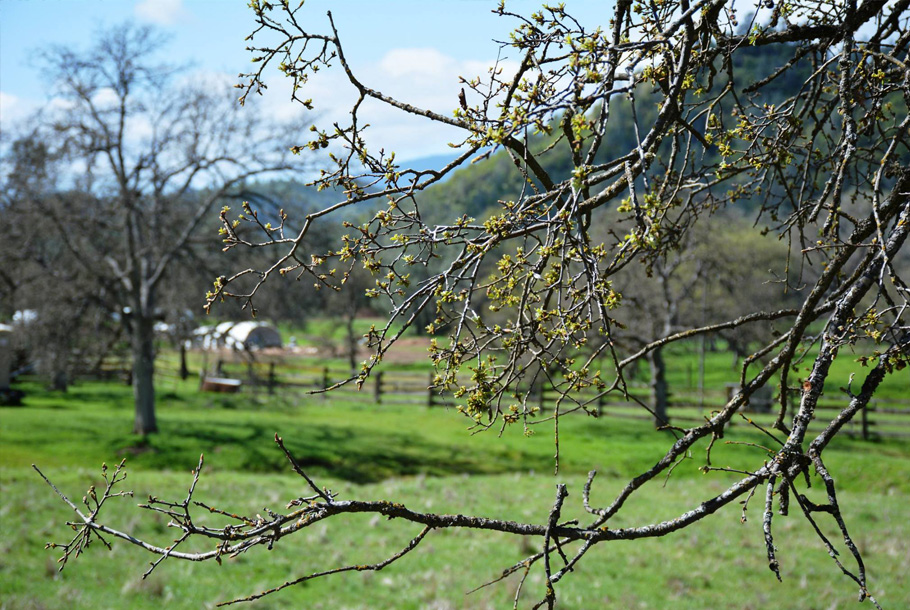
What Makes it Regenerative?
“In regenerative agriculture,” Dawley says, “the idea is that we're farming in Mother Nature’s image. We're taking her operating system that is really good at working on its own. But, you know, we have this idea that you can take the humans out of the system and that in time Mother Nature will balance everything—that the checks and balances would all happen without humans involved messing it up. But what people don't think about is the flip side. The power that we have wielded to mess things up can flip and we can use that same power to make things better!
“We are part of the ecosystem—you can't really pull us out of it. Our Western society makes us feel separate from it, but we need to understand how we fit into it, and how it works on its own, and how we can take our ability to affect the environment and change it from evil to good. So, the normal approach is discing and tilling your field before you plant a cash crop. But Mother Nature doesn't do that. What Mother Nature does is to always have ground cover. She always has living plants as best she can. So we need to take that concept! Mother Nature says that this is the model: we need plants all the time and we need diversity of plants. So that's where the cover crop idea comes in.”
Big Bluff Ranch has been investing a lot of time and effort into cover cropping. “For the mainstream farmer, cover crops are a way of building out soil health and fertility and soil carbon and all sorts of cool stuff. They’ll lay it down [terminate it with roller crimping, for example] and then they'll come back and they'll no-till in a cash crop—corn or soybeans or something like that. For us out here, our cover crop is really all about soil health and then soil cover. So what we do is graze it off. Either we'll run chickens across it and the chickens knock it down and play with it and eat it, or we'll bring our cows in and they'll do the same thing. The cover crop needs to be laid back down on the ground so the microbes can get to it, or eaten and digested and turned into something else that turns into fertilizer like dung or urine. Animal impact does that—the most regenerative way is to bring animals in.
Specific Regenerative Practices
“Regenerative agriculture is trying to understand Mother Nature's operating system, figure out how it's happening, and then take our active management and accelerate what she would do if left alone. The actual practice is what changes in your brain. ‘Ohh, how do I manage things right?’ So that's the big practice.
“Get down to the techniques and tools and that's going to be a little bit different for everyone. We are a pasture-raised chicken operation and in the pasture-raised world there's two main production models. There's what they call the daily move guys, which is the vast majority. They have these little pens that they move every single day—it's the thing that everyone starts with. And then there's a smaller style of raising chicken that we practice called day range. So what we'll do is we set up infrastructure and we brood them on a fresh piece of pasture. We open up the doors at the end of the brooding, and they walk farther and farther away from the hoops to get their fresh feed, and then they come back and shade up during the day. And when we harvest the birds, we pick up all that infrastructure and put it on a new section of field and start the cycle of life all over again. We do less frequent moves, but less frequently come back. That means we impact an area really heavily, but then we give it a really long recovery period. There are pluses and minuses both ways. For us, this works really well.”
Other things they do: “Fencing for cows, water points for both cow grazing access as well as wildlife. We’re certified organic, so we don't spray stuff. With the way we raise our chickens, we end up with a fair amount of chicken compost that we spread on the rangeland for fertilization purposes. We do cover crops before and after. And chickens, you know, do good stuff for the soil. “
They also intensively manage their cattle and their renters’ cattle when they’re on the property. “Basically, we are matching stocking density and timing to production, forage production and growth rates of the plants. So right now we're in springtime so—rough rule of thumb—fast growth, fast moves. The cow takes a bite of that plant and she's gone. The plant has enough time to recover completely before you come back and take another bite. Overgrazing is a factor of time, not numbers. So if you graze one area for too long you're going to overgraze things, but if you're moving appropriately, you don't overgraze.”
Getting into the carbon market is getting underway. “It's more a byproduct of being groovy, but we just signed a contract to sell carbon credits where we’re getting paid for all the carbon we're sequestering through our regenerative practices. We just did a really thorough baseline analysis this year. In five years we'll do another massive analysis and see what happens. So that'll be interesting. It will be interesting to be able to say I'm sequestering this much. It could also be really profitable, too.”
They also work with the Wildlife Conservation Board, California Department of Fish and Wildlife, and Northern California Regional Land Trust to implement the goals and objectives of the Red Bank Creek Riparian Restoration Project. Specifically, they are helping to restore 3 miles of Red Bank Creek, a tributary to the Sacramento River.
Special Equipment Needed
“We use temporary electric fence for our cattle. We use some temporary electric fence to try to keep the chickens in, although it's more to protect them. We have ranch-made movable hoops, specialized for raising chickens. Our neighbor bought a no till drill, so we just borrow it from him. If you’re a large scale farmer, there's some specialized equipment you might need to use, but because we're mostly animal people most of the specialized equipment is education and in between your two ears. It comes down to management practices. You have to build fence. You have to have water and a little bit of this and that, but mostly it's what happens in your head and working with that.”
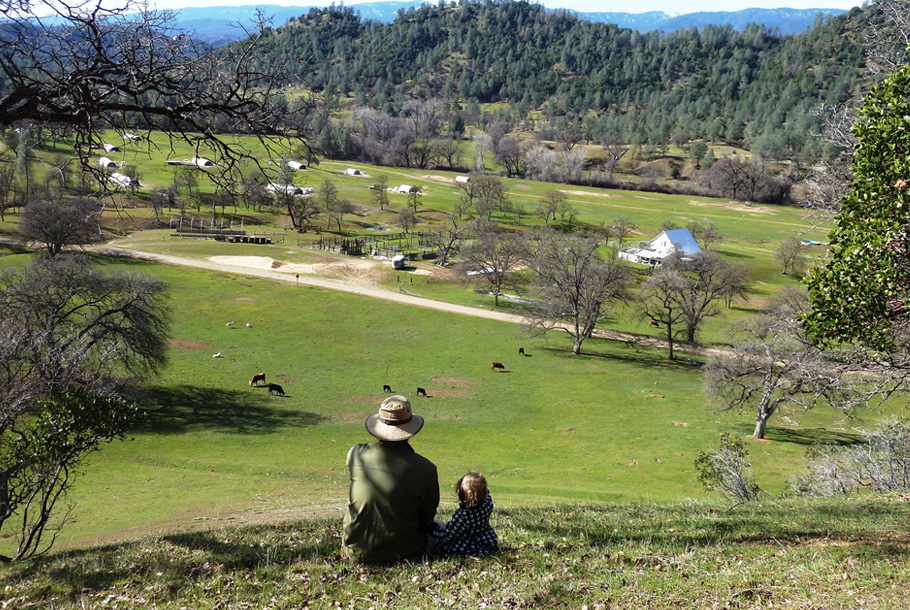
Profitability and Plans for the Future
Big Bluff Ranch lost two major contracts during the pandemic that they are still recovering from, but they have an ambitious roadmap for moving forward:
“Ideally, we'd get back to full production with the chickens, which will be about 6000 birds a month that we will produce. And they'll produce thousands of tons of chicken compost that we can spread on the rangeland.
“We want to get our Thanksgiving turkey program up and going, probably 1 to 2000 head a year at a minimum—the market feels like we could probably get up to 5000 head of turkeys. Turkeys are cool because they're mobile. We can raise them up in these cool places where we can never take chickens. So that's something we're looking to get into.
“The other thing is that our ranch is either flat or it's up and down, and we don't actually have that much flat. So our ranch is much better suited for grazing small ruminants like goats and sheep because they like to climb hills and eat brush. Demands of when they're pregnant and when they're lactating matches how our forage curve spikes in the spring and tails off for the rest of the year so you can match those physiological demands to forage production really well. So we want to and will get back into small ruminants over the next few years.”
They also want to continue to expand their cover crop practices and continue to encourage native rangeland perennials to grow. “We want to take our landscape and through our active management, regenerate it to the point where Mother Nature left it. And we can probably even take it beyond where she would manage it herself. We can easily double the carrying capacity of the ranch through good grazing management, adding in cover crops, and compost. Add time and management and we could probably quadruple the carrying capacity of the ranch as measured by how many animals we can run out here. But that's not really the true metric of why we should care about that. Yes, we can run that many cows, but that also means we've grown that much feed. And if we've grown that much grass, it's captured that much airborne carbon and stuck it in the ground. And the cool thing is about what the carbon grows in the ground: it's a building block for soil fertility. So that's getting in there, earthworms are everywhere, and your mycorrhizal fungi, and then your soil structure is opening up. So when the rain comes, it goes in, not across. We had a ton of rain this winter, but the total rainfall doesn't matter so much. It's the effect of rainfall that matters. You want that rain to go into the soil. If it goes into the ground and the ground is basically a sponge, then our plants will be able to get into it. Year-round springs that Bambi relies on will have water year-round, fed from our rangeland. There's all sorts of fun stuff we want to do.
“We're like every other farmer though. This is not a lavish lifestyle. I'm not taking vacations to the beach and sipping my little drinks with an umbrella in it. But we love what we do. It makes just enough money, but we are roughly in the same situation as everyone else. My mom still works in town and my wife works in town at off-farm jobs. We need the benefits—health insurance, that sort of stuff. On a margin basis, everything we do is pretty profitable—but we need to sell more at the prices we have now. That's really where regenerative stuff gets interesting because through good management practices you can sell more products.”
Advice to Others
“The lure of agriculture is the thought of being your own person, working with your hands, and taking care of the land and connecting deeply with the place. And that is absolutely true. The reality, though, is that agriculture is not just working hard at something you love doing. Agriculture is a business. It is a business that has huge capital costs and very low margins. If you want to be a farmer, you need to come into this with a business mindset. If you are just doing this as a hobby or hoping that it works out, you are going to spend a ton of time and money and end up crying at the end of it.
“I happened to be looking at one of the Edible Shasta magazines from about 10 years ago. There was a whole bunch of pastured pork producers in that issue, all growing like crazy. And now they're all gone, they don't exist. I don't know any of them specifically, and I'm not singling out pork as an issue, but the reality is that very likely these people got into it as a passion, as a hobby, as a lifestyle. And they thought that hard work would make it happen for them and did not enter into it as a business. You have to, even if this is a retirement hobby, you have to look at it as a business. Agriculture will take every single dollar you can throw at it and then laugh and want more! There's a joke about a boat being a hole in the water that you throw money into. It's the exact same thing with a farm. It's a hole in the ground that you throw money into until you don't have any more money. And so the reality is that all these really fun management practices and this amazing regenerative work—that's the front end. That is the excitement. That's the lure.
“The reality is that you have to have a really strong back end. You need to know your finances. You need to know where your money is coming from, what you need to charge to make yourself a living, and know what the market will charge. There's economic realities that you cannot ignore!
“Now that being said, getting into regenerative agriculture is great because you end up having this huge delta between your income and your input. If you do regenerative agriculture right, you don't need as many inputs. You actually increase the fertility of your landscape, so you're going to grow more food with fewer inputs. At a worst case scenario, your income stays the same, your commodity prices stay the same, but you’re doing things better. But the reality is that you could potentially even increase your income because you can say ‘we're regeneratively certified, I'm organic certified.’ But you can't do that unless you know the numbers! Regenerative agriculture allows you the potential for this greater margin, but it only happens if you're actually paying attention to the numbers. If you're just doing it because it's cool, I understand you. We do a lot of stuff because it's cool. But it doesn't necessarily make money. Ultimately, the best indication of a sustainable ranch is one that is in business. If you are sustainable for five years, then you go out of business in five years, you were not a sustainable ranch, right?
“So begin with the end in mind, if you want to quote Stephen Covey. How much money do you have to make for a living? What is your quality of life? Will your wife have to work off the farm? Will you have to work off the farm and your wife works on the farm? We can be gender neutral here, no stereotypes. You need to know how much money that will take. What do you want to raise? Who are you? What makes you excited? Are you an animal person? Are you a plant person? What is the market?
“There's some baseline assumptions you have to plot in and then you will find out how big you need to be. And I'm willing to bet that you're going to be surprised at the scale that you need to be to succeed. 72,000 chickens a year for us! That’s not big—that’s the minimum. It sounds like a lot of chicken but, no, that's sort of middle to bottom of the number we would have to produce. If I need to make this much money, I need to raise this much chicken. But I can't raise that much chicken without help, so I need to hire an employee. So now I need to raise that much more chicken, right? It's this pyramid of reality.
“So it's really, really important to start off with your business plan. And don't think of it like a scary go- to-the bank business plan, just an understanding of how your business is going to go. And you need to complement that with a marketing plan. Again, not a crazy fancy thing, but an understanding of how do I capture the value that I'm creating to the best of my ability? And then once you understand who you are as a business and how you're going to sell it, then you can get around to actually producing it. Because the reality is that producing it—even though it is an art and it takes a lifetime to get good at—that is the simplest thing. It's also the thing that makes you the least amount of money. There's a reason why farmers are poorer. It is because all they do is produce and let everyone else think about the business and the marketing. But you can't afford that. You have to integrate all of that if you want to make the living that you need to be able to stay on the land and sustain future generations.”
